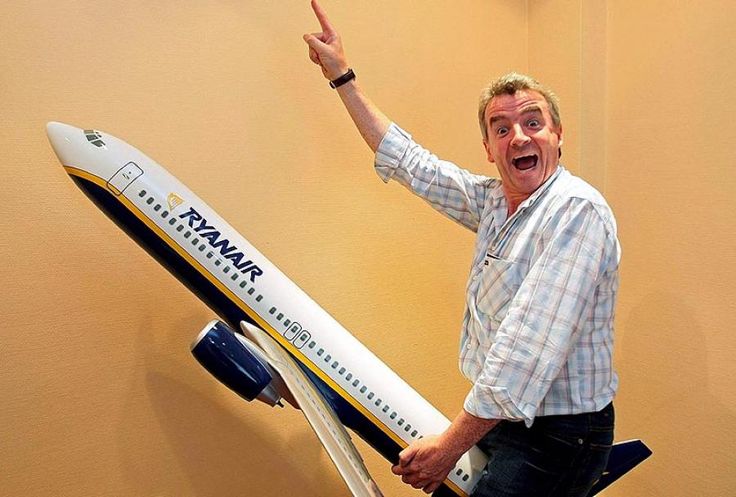Ryanair Group CEO Michael O´Leary said the performance of its Boeing 737-8200s has exceeded his expectations.
O´Leary told me recently on the sidelines of the Airlines For Europe Summit in Brussels, that the strong fuel savings are the most positive surprise of the 737-8200 operations.
“Boeing guaranteed us 14% fuel savings, [and] at the moment we are at some 18% to 20% fuel savings [compared to Ryanair’s 737-800NG fleet], [It’s] also because our load factor is only about 84% or 85% at the moment compared to 95%.”
Ryanair Group CEO Michael O´Leary
O’Leary mentioned other positive factors of the MAX operations. “Lower noise, more passenger legroom; pilots say it is a more responsive airplane,” he said.

“We have taken about 55 aircraft by the end of March, and we are about to take up to 12 more deliveries in April, May, a total of 67,” O’Leary said. Another 55 aircraft are set for delivery from September 2022 through March 2023. The next 55 aircraft are planned from September 2023 to March 2024. “And then I think it is about 40 or 50 aircraft in time for summer 2026,” O’Leary said.
“The next logical development is the MAX 10,” O’Leary said. “The growth to bigger aircraft, 220 seats, but the MAX 10 is not certified yet. We haven’t yet restarted negotiations with Boeing on pricing.”
Ryanair will have taken delivery of 210 737-8s through the end of spring 2025. “We don’t need the MAX 10 until 2026 or 2027,” O’Leary said.
Ryanair remains interested in the Airbus A320neo family, “but I don’t know if the A320NEO will be ever right for us,” O’Leary said. He mentioned that while the A320neo is a very successful aircraft for Airbus, the order books are full, they are converting Boeing customers into Airbus customers, and it seems to be they are staffed out for the next four or five years.
“Boeing’s order book is weak, the certification for the 737-10 is delayed, and the MAX has not been a very successful program for them so far and they need more orders,”
Ryanair Group CEO Michael O´Leary
Russia-Ukraine War Impact on Ryanair
Since the outbreak of the Russia-Ukraine war, Ryanair Group has had to cancel 50 flights per day in and out of Ukraine. O´Leary said, “We canceled those flights from Feb 24th until the end of the winter schedule … it cost us about 2,000 flights, 300,000 passengers were lost.”
For summer 2022, the aircraft will be relocated to Poland, Slovakia and Romania, away from Ukraine. “Over the next 12 months we had hoped to grow about two million passengers in Ukraine and four million next year because it is one of our fastest-growing markets,” O’Leary said.
The first base in Ukraine was scheduled to open this winter, in October 2022. This project has been postponed for the time being.
“But we are quite flexible and replaced those [Ukraine] flights with others in Europe for the next year or two,” O’Leary said. “We will be the first airline [to] be back in Ukraine.”
O´Leary said that there has been a decline in inbound traffic to places in Poland and the Baltic states. “But there is an increase in outbound traffic, with refugees on board,” O’Leary said.
O’Leary said the airline industry has changed to a so-called new “reality.”
“We thought the worst that could ever happen was 9/11, then the Gulf War, Icelandic volcanoes or COVID,” O’Leary said. But Ryanair today is an even more efficient carrier compared to before COVID-19, the Group’s CEO said, yet challenges such as higher fuel prices, taxes, and summer airport delays remain.
Ryanair Group's Four Brands
Regarding the Group’s four brands — Buzz, Malta Air, Lauda and Ryanair—O’Leary said he is very happy with this variety of brands because they are all strong and get the Group closer to the various markets. “They have a better look into each market because when you are sitting in Dublin [Ryanair headquarters] you are a bit isolated,” he added.
Most of these airlines provide operating lift for Ryanair. Buz has its own charter operations as well. “We think this gives us efficiencies, [and] creates some internal competition between the airline regarding allocation of capital. Each CEO has to bid for another aircraft,” O’Leary said. Regarding this internal competition, O’Leary hopes that it keeps Ryanair fit in terms of its low costs. “The challenge is the same for Ryanair itself,” he said.
The LCC currently operates from 200 bases. The group will slow the number of new bases, as today Ryanair is nearly everywhere, the CEO said. “In the next five years, when we grow to 225 million passengers, the number of bases may grow to 220 or 230,” O’Leary said. Ryanair is currently looking to Oslo Gardermoen (OSL) and Copenhagen’s Midtjyllands (formerly Karup) Airport (KRP) as possible next bases.
Cover Image: Pininterest/Unknown


